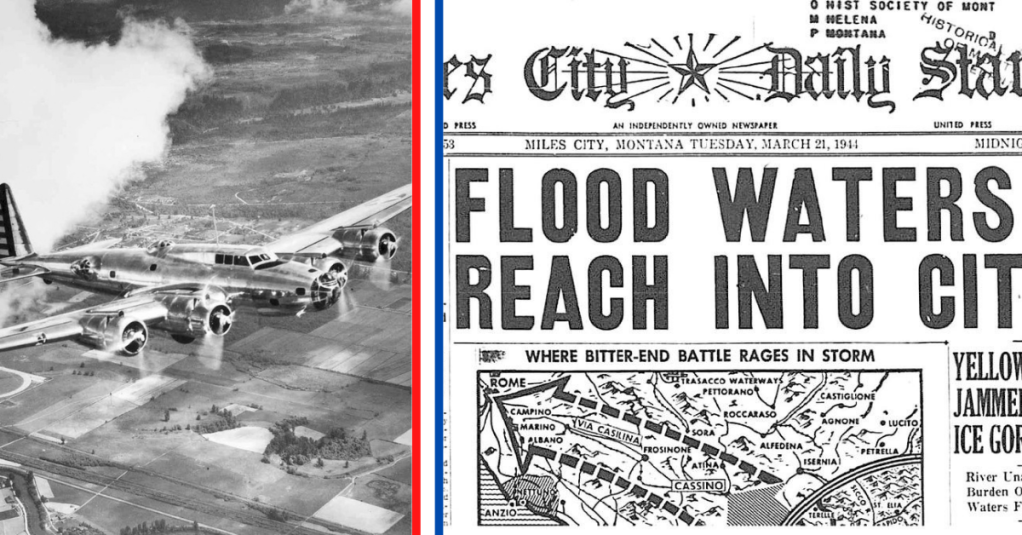By March of 1944, World War II had turned decisively in favor of the Allies. The war was far from won, but the Allied nations were advancing on all fronts, in every theater of battle, all over the world.
The Allies had broken the Japanese on Papua New Guinea, German U-boats were dropping to the bottom of the Atlantic Ocean, and the Army Air Forces began bombing Italy, Berlin, and Palau.
On the homefront, life was beginning to return to a kind of normalcy. Dartmouth College was set to play the University of Utah in the NCAA Division I basketball tournament. “Casablanca” would win Best Picture at the 16th Academy Awards, and Jimmy Dorsey’s “Bésame Mucho” topped the Billboard charts.
Everything seemed to be going well for the U.S. until March 21, 1944, when residents of a Montana town woke up to a startling picture: the Yellowstone River, full of ice floes amid a winter storm, began to overrun its banks. Large chunks of ice had jammed up the river and was threatening the nearby town of Miles City.
Miles City has had a long military history. It was named for Gen. Nelson Miles, who was the commander of Fort Keogh, around which the town was founded in the 1890s. Fort Keogh itself was named for Capt. Myles Keogh, who was killed at the Battle of Little Bighorn. Miles City is even the seat of Custer County.
In 1944, the town wasn’t much smaller than it is today, with a population of just 7,300. Despite its size, the rising waters of the Yellowstone didn’t mean the U.S. government would just let thousands of American citizens die an icy, watery death. If the government didn’t take action, the whole town would certainly be wiped off the map.
L.S. Keye, the Mayor of Miles City, cobbled together some explosives to break up the ice jam that was causing the river’s rise. They put them together as 50-pound bombs and dropped them on the jam with the help of some local pilots flying small planes. It was a gamble that didn’t pay off. When the bombs failed to solve the problem, the mayor called the governor.
If there was one thing the United States definitely had on hand in 1944, it was bombs and planes, so when the governor of Montana heard the call for help, he got the Army Air Corps to work on the best solution they knew: the same solution, only much, much bigger.
At Rapid City Army Air Base, which is today Ellsworth Air Force Base in South Dakota, a B-17 Flying Fortress crew immediately agreed to drop bombs on American soil. Eight crew members fused and loaded a B-17 with 250-pound bombs and took off into the blizzard conditions – a dangerous feat at the time.

In the icy air, the bomber crew had a hard time making out the target as they made their bombing run. At 7:30 p.m. local time, a lone bomber cut through the skies over Miles City, Montana, flying at 10,000 feet. As the imperiled townsfolk watched, the B-17 made two dummy bombing runs to ensure the ordnance would hit the target in the heavy weather.
Then the Flying Fortress dropped one real bomb on the town. It slowly fell and hit the ice jam, right on target – but nothing happened. After two more bombs, the ice was still firmly in place, so the crew decided to drop its entire payload. As the bombs exploded across the ice jam, columns of mud, ice, and debris shot into the air as the jam crumbled under the barrage.
The water began flowing once more and the flood waters receded. The Yellowstone River went back to its natural levels and the town of Miles City was saved from an icy, murky doom. It turns out nothing can stop the U.S. (Army) Air Force, not even mother nature.

